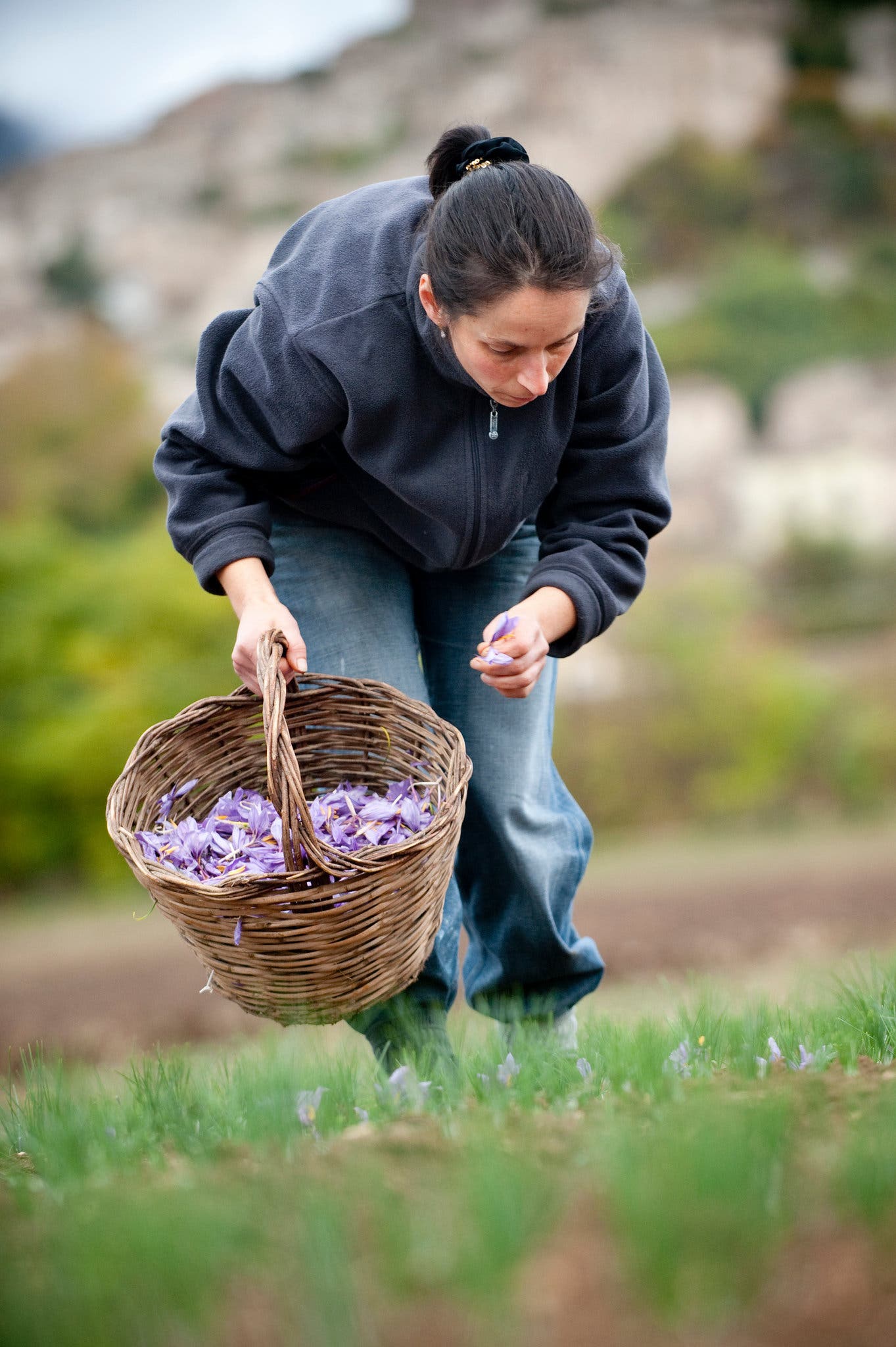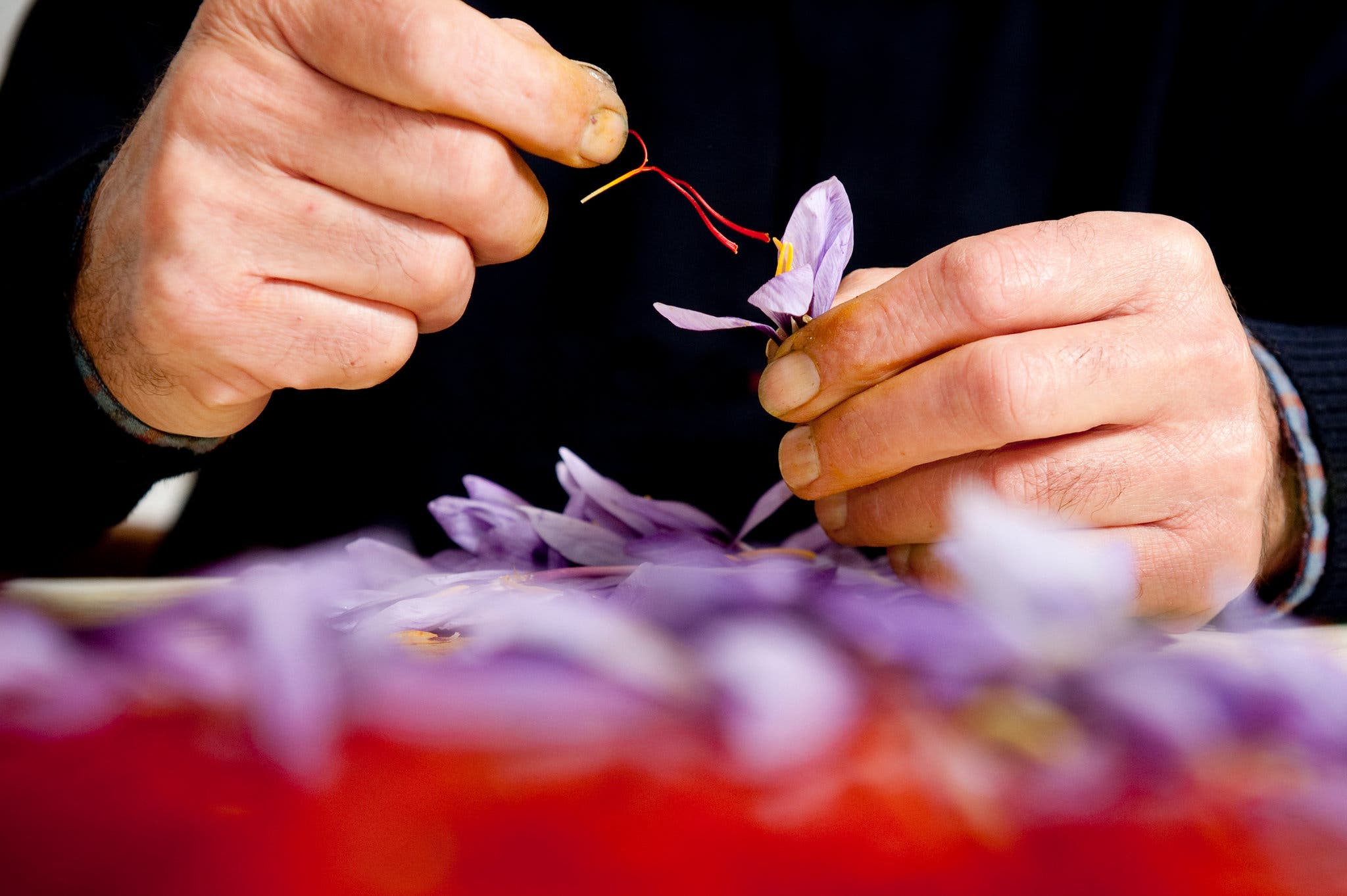Saffron
The Red Gold of Persia
What is considered a luxury good, changes dramatically with time and availability. Once, both common black pepper and salt were so costly that wages and debts were paid in their measure. When potatoes travelled from South America to Europe, the crop was so coveted that the king of France had his potato patch under armed guard. Saffron, on the other hand, is probably one of the few commodities that has never lost the huge value or almost mythical allure it was assigned in antiquity. Even when the cost of gold fluctuates, saffron’s high price tag remains steady.
Why Is Saffron Expensive?
The main reason, of course, is that saffron is incredibly laborious to harvest. It remains one of the few crops that has not benefitted from automation – perhaps because of the delicacy of the operation of plucking the thread-like stigmas from the flower. It is hard to imagine how this task that requires the most delicate touch, paired with sharp precision, could ever be taken over by machines, but only time will tell. Estimates hypothesize that about four hundred hours of human labor are needed to produce just 1 kg of saffron.
Another issue with saffron growing is its areas of cultivation
Historically, few climates have presented the perfect conditions to grow saffron, although stalwart devotees have tried to grow it in virtually every corner of the world – with more success in some areas than others. In modern times, climate change is potentially redrawing the map of saffron-growing zones, often to the detriment of regions historically known for growing saffron
and where saffron culture is an integral part of local heritage.
But Iran still produces more than 90 per-cent of the world’s saffron. The Food and Agriculture Organization of the United Nations has named some regions of saffron cultivation in Iran, India, and Afghanistan, to be Globally Important Agricultural Heritage Systems. The GIAHS designation serves in much the same way as AOC in France (Appellation d’origine contrôlée, or label of controlled origin) or DOC (Denominazione di origine protetta, or label of protected origin) in Italy do – to verify the authenticity and purity of the food product in question.
Another aspect of the designation is that it recognizes how integral the farming systems or crops in the GIAHS area are to the fabric of local society in a cultural sense as well.
Saffron growing is considered a heritage agricultural activity in Kashmir/India.
The drive to procure a reliable source of saffron that is both pure and less affected by foreign markets remains today as strong as it did throughout antiquity, the Middle Ages and the Renaissance.
In northern California or even as far north as Canada, farmers are trying their luck with saffron. On the other side of the world, New Zealand has a growing number of large-scale domestic producers, and smaller farmers in Essex, England, are working hard to bring back what was once a booming medieval industry, centered around towns like Saffron Walden. In the Netherlands, a country known for its skill in growing the world’s most abundant and beautiful varieties of tulips, growers are leveraging their knowledge of growing this bulb-based plant to try to grow saffron from corms. The first harvest and export of Dutch saffron happened in 2019. Persistent individuals have even tried
albeit with limited luck – growing saffron at high elevations in subtropical climates, which are normally inhospitable to the saffron crocus.
What has brought about the new millennium interest in growing saffron outside its traditional growing areas? Certainly, the interest in saffron cultivation could be called a modern-day gold rush towards a crop with a higher price per pound than any other, but other forces are surely at play for saffron to be pursued so earnestly in regions with no social or cultural association with the plant and its role in cuisine, religion, art or medicine.
For gourmands devoted to an eat-local lifestyle, locally grown saffron is an attractive way to have an incomparable spice normally grown far from home. However, for the most part, it’s the pursuit of health that is making saffron so attractive – as it has off and on for millennia. Certainly, there are scientists researching saffron’s potential in a variety of illnesses, but aficionados of popular, trendy medical advice are also hailing saffron power for everything from weight loss to curing Alzheimer’s and Attention Deficit Hyperactivity Disorder (ADHD). According to a study by Market Research Reports, a research firm based in Albany, New York, the market for capsules or tablets of concentrated saffron as a food supplement targeted towards health consumers is expected to see huge growth well into 2025. Saffron day creams, night creams, and body and massage oils are in high demand in South and East Asia and are an increasingly growing market. Small, artisanal producers in the West are beginning to explore this market segment as well.
Indeed, much of the advertising language used to market these new saffron supplements and beauty products include words like ‘miraculous’ and ‘magical’ – just as they did thousands of years ago when saffron sellers were marketing the spice as Alexander the Great’s secret health weapon. Whether or not saffron can cure a variety of human ills remains to be seen – this is a question that must be answered by scientists. But regardless of its promise as a panacea, one thing is true of saffron: it remains firmly entrenched in the imagination and hearts of those who experience it as the queen of spices.




